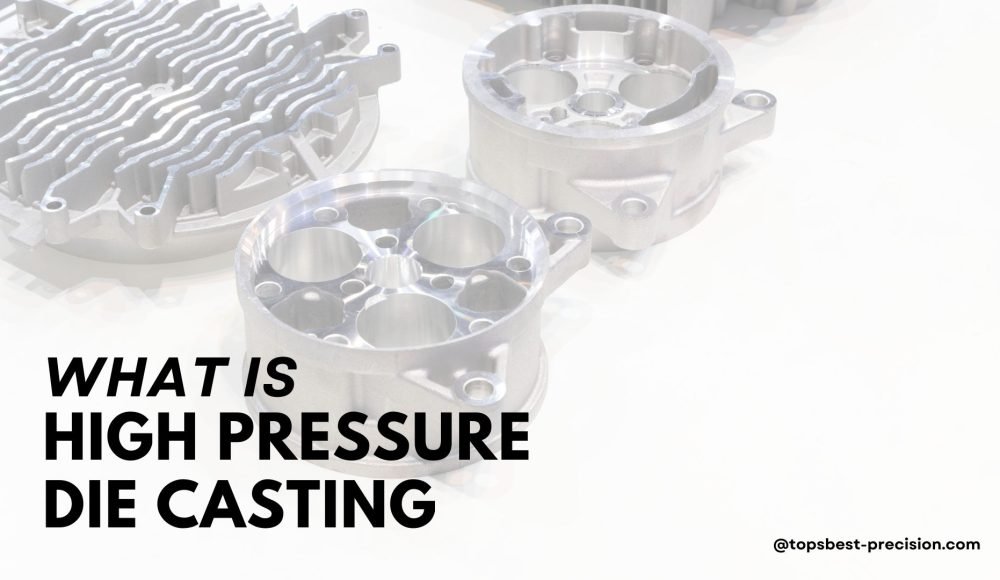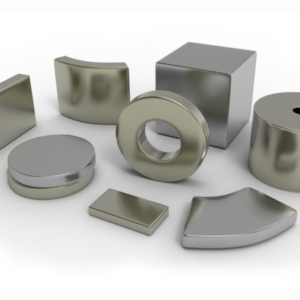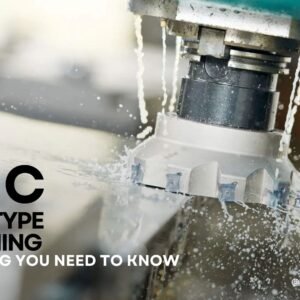高圧ダイキャスティング (HPDC) 強力な生産で知られている広く使用されている製造プロセスです, 軽量, 高精度の複雑な金属部品. 自動車などの業界で重要な役割を果たしています, 航空宇宙, および医療機器の製造, 耐久性, 正確さ, 効率が不可欠です.
この記事では、詳細な見方を示します 高圧ダイキャスティング (HPDC), その作業原則を含む, 利点, アプリケーション, 低圧ダイキャスティングとの比較 (LPDC). 最後まで, このプロセスが製造ニーズに適しているかどうかを明確に理解することができます.
高圧ダイキャスティングとは何ですか?
高圧ダイキャスティングは、溶融金属を鋼型に注入するプロセスです (死ぬ) 高圧下, 迅速な固化と高精度を確保します. このプロセスにより、薄壁の生産が可能になります, 軽量, 自動車などの業界で一般的に使用される構造的に複雑な部分, 航空宇宙, および医療製造.
HPDCの重要な特性
- 用途 高圧 (1,500 に 25,000 PSI)溶融金属をダイに注入する.
- 迅速な冷却と固化 生産率が高くなります.
- 生成 複雑で複雑な形状 優れた表面仕上げ.
- 再利用可能なスチールダイ 費用対効果の高い, 大規模な生産.
高圧ダイキャスティングの歴史と進化
ダイキャスティングの起源は1800年代半ばにさかのぼる日付, 印刷業界で主にプレス用のリードとスズのタイプを製造するために使用されたとき. 時間とともに, この手法は進化し、複数の産業で採用されました.
重要なマイルストーン
- 1800年代半ば: 最初に印刷機のコンポーネントに使用されます.
- 1900年代初期: 他の産業への拡大, 亜鉛とアルミニウム合金の導入.
- 1930s – present: 大量生産のために、より高度な合金と自動化されたダイカストマシンの採用.
今日, HPDCは、優れた強度と精度のある金属部品を生産するための主要な製造方法です.
高圧ダイキャスティングに最適な型を設計します
高品質の金型を作成することは、高圧ダイキャスティングの最も重要なステップの1つです (HPDC). 金型が決定します 精度, 耐久性, と効率 鋳造プロセス全体の. 適切に設計された金型は、スムーズな生産を保証するだけでなく、欠陥を軽減することも保証します, ツールの寿命を延ばします, 生産コストを削減します.
適切な金型材料を選択します
HPDCは激しい圧力と熱の下で動作するため, 金型は、ある材料から作らなければなりません:
✅ 強くて耐久性のある - 変形せずに繰り返し使用に耐える.
✅ 耐熱性 - 極端な温度サイクルを生き延びます.
✅ 耐摩耗性 - 表面の損傷を最小限に抑え、ツールの寿命を延ばすため.
一般的な金型材料
- H13ツールスチール - そのためにHPDC金型に最も一般的に使用される鋼 高い硬度, 耐熱性, そして耐久性.
- H11ツールスチール - H13に似ていますが、大きな型の方がわずかに丈夫で優れています.
- マレージング鋼 - 優れたものを提供します 亀裂抵抗 複雑なデザインに役立ちます.
に カビの寿命を延ばします, メーカーはしばしば適用されます 表面処理 のように ニトリッドまたは PVDコーティング, 耐摩耗性を高め、摩擦を減らします.
主要な金型の設計上の考慮事項
あ よく設計されたカビ 滑らかな金属の流れを保証します, より速い冷却, そして簡単な部分放出. 考慮すべきいくつかの重要な要因を以下に示します:
適切なゲートとランナーシステム
- の ゲート 溶融金属が空洞に流れるエントリポイントです.
- ランナー 溶融金属を均等に分配します.
✅ ベストプラクティス:
- 使用 複数のゲート のために 大規模または複雑な部品 乱流を避けるため.
- デザイン 段階的な移行 ランナーでは、滑らかな流れを維持します.
ベントとエアエスケープパス
閉じ込められた空気が引き起こす可能性があります 気孔率 (部品内の小さな穴), 最終製品を弱める.
✅ ベストプラクティス:
- 追加 通気チャネル 閉じ込められたガスが逃げることを許可します.
- 使用 真空アシスト HPDC のために より良い空気除去 重要な部分で.
より速い固化のための冷却システム
効率的な冷却により、一部の品質が向上します サイクル時間を短縮します.
✅ ベストプラクティス:
- 水またはオイル冷却チャネル 金型の内部は、温度を制御するのに役立ちます.
- 均一な冷却 防止します 反り そして 不均一な収縮.
パーツを簡単に削除するための排出システム
金属が固まると, エジェクターピン 型から部品を押し出します. 不十分な排出設計が引き起こす可能性があります こだわり, 反り, または損傷 部分に.
✅ ベストプラクティス:
- 使用 複数のイジェクターピン に 偶然の力を適用します 部品全体.
- 角度のあるエジェクターピン 助けることができます 複雑な形状.
壁の厚さとドラフト角
- 薄い壁 体重を減らしますが、圧力を処理するのに十分な強さでなければなりません.
- ドラフト角度(わずかなテーパー) 部品が行き詰まらないようにします 型で.
✅ ベストプラクティス:
- 最小ドラフト角: 1°から3° 滑らかな排出のため.
- 壁の厚さ: 通常、1-5mm(素材によって異なります).
一般的なカビの欠陥とそれらを防ぐ方法
素晴らしい型でさえ, いくつかの欠陥がまだ発生する可能性があります. それらを避ける方法は次のとおりです:
| 欠陥 | 原因 | 解決 |
| 気孔率 | 閉じ込められた空気/ガスの泡 | 通気を改善します, 真空支援HPDCを使用します |
| ひび割れ | 熱応力と迅速な冷却 | 冷却システムを最適化します, より良い合金を使用してください |
| フラッシュ (エッジの追加材料) | 高い噴射圧または位置合わせ型 | 圧力を調整します, カビのアライメントを確認してください |
| 短い詰め物 | 金属に到達する金属の不十分なカビ | 注入速度を上げます, ゲーティングデザインを改善します |
高圧ダイキャスティングはどのように機能しますか?
HPDCプロセスは、5つの主要な段階で構成されています: カビの準備, 注射, 固化と冷却, 部分排出 および後処理.
ステップ 1: カビの準備 - キャストの準備をする
何よりも前に, 型 (「ダイ」とも呼ばれます) ある必要があります 掃除と潤滑.
- クリーニング: 前のサイクルから残りの金属を除去します.
- 潤滑: カビの温度を制御するのに役立ち、完成した部分を簡単に削除します.
それを考えてください ケーキのバッターを注ぐ前に、ベーキングパンをグリーシングします - それは固執を防ぎ、均等な結果を助けます!
ステップ 2: 溶融金属注入 - 圧力下で金型を埋める
さあ、その時です 溶融金属を注入します 高速と圧力でダイに. しかし、最初は, 金属は必要です 完全に液体になるまで加熱されます. の 金属の種類 使用されているのは、作成されている部分によって異なります, しかし、一般的な選択肢は含まれます:
- アルミニウム - 軽量で強い (車や航空宇宙で使用されます).
- 亜鉛 - 詳細に最適です (エレクトロニクスおよび消費者製品で使用されています).
- マグネシウム - 非常に軽いが耐久性がある (医療ツールと航空宇宙で使用されます).
の 注入プロセス で起こる可能性があります 2つの方法, 金属に応じて:
- ホットチャンバー注入(亜鉛やマグネシウムなどの低融合金属用)
- 注入システムがあります 内部 溶融金属, プロセスを作成します 高速で効率的です.
- コールドチャンバー注入(アルミニウムや真鍮などの高販売金属用)
- 溶融金属はです 別々に注がれました 型に注入される前にチャンバーに.
メソッドに関係なく, の 溶融金属は極度の圧力の下でカビに押し込まれます - 25,000 PSI!
- これ 高圧 最小の詳細でさえ完全に形成されるようにします.
- 金属 すぐに広がります 型を通して, 涼しくなる前にすべてのコーナーを埋めます.
ステップ 3: 固化と冷却 - 液体を固体に変える
型の中に入ると, 溶融金属 ほぼ瞬時に冷却して固化します.
- 型はでできています 鋼鉄, どれの 熱を素早く吸収します, 金属が速く硬化するのを助けます.
- いくつかの型にはあります 組み込みの冷却チャネル それはプロセスをスピードアップするために水または油を循環させます.
サイクル全体 - 注入から固体へ - ちょうど起こる可能性があります 数秒から1分, HPDCを最速の製造方法の1つにする!
ステップ 4: 部分排出 - 固体金属片を取り外します
金属が完全に固化した後, 型から部品を削除する時が来ました.
- 型 開きます, そして エジェクターピン パーツを優しく押し出します.
- これらのピンは、部品が立ち往生しないようにし、スムーズに飛び出すのを助けます.
使用したことがあるなら アイスキューブトレイ, 背中を押してアイスキューブをリリースする方法を考えてください。同様のアイデアです!
ステップ 5: トリミングと仕上げ - 部品のクリーンアップ
この時点で, 金属部分はです ほとんど準備ができています - しかし、まだいくつかの追加の素材が付いています.
- 残りの金属の小さなビット, 呼び出されました フラッシュ, 金型の半分が出会う場所.
- このフラッシュはです トリミングされた 特別なツールを使用するか、マシン内の部品を転倒することによって.
- 一部の部分も通過する場合があります 追加の仕上げステップ, のような:
✅ 研磨 - 粗いエッジを滑らかにする.
✅ メッキまたはコーティング - 耐食性を改善するため.
✅ 絵画または陽極酸化 - 外観と耐久性の向上.
ホットチャンバー対. コールドチャンバー注入
違いを分解しましょう 簡単なテーブルで したがって、キャスティングニーズに最適な方法をすばやく確認できます.
熱いチャンバーとコールドチャンバー注入の比較
| 特徴 | ホットチャンバー注入 🔥 | コールドチャンバー注入 ❄❄️ |
| 仕組み | 注入システムがあります 内部 溶融金属, 液体金属を型に直接引っ張ります. | 溶融金属はです 別々に注がれました 部屋に, 次に、型に注入されます. |
| 金属に最適です | のような低融合金属 亜鉛, マグネシウム, そしてリード. | のような高融合金属 アルミニウム, 真鍮, と銅. |
| スピード | 金属がすでにシステムにあるため、より速いプロセス. | 注射前に金属を手動または自動的にチャンバーにひしゃくする必要があるため遅い. |
| 圧力範囲 | 用途 注入圧力の低下 (約1,500〜5,000 psi). | 用途 より高い噴射圧力 (約10,000〜25,000 psi) 厚い金属を金型に押し込む. |
| カビの生命 | 温度差が低いため、より長いカビの寿命. | 曝露により、カビの寿命が短い より高い熱と圧力. |
| パーツの複雑さ | に最適です 小さい, 細かい部分 素晴らしい機能を備えています. | より良い 大きい, より強い部分 耐久性が必要です. |
| エネルギー効率 | もっと エネルギー効率 機械の中に金属液を保持するからです. | 用途 より多くのエネルギー 金属は個別に再溶融する必要があるためです. |
| 一般的なアプリケーション | のような小さなコンポーネント 電子ハウジング, 括弧, とファスナー. | のような重い部品 エンジンブロック, 構造コンポーネント, および航空宇宙部品. |
どちらを選ぶべきか?
- ホットチャンバーを選択してください 一緒に働いている場合 低融合金属 そして必要です 迅速な生産 詳細が高い.
- コールドチャンバーを選択してください 使用している場合 融合金属 それは耐える必要があります 強い力と摩耗.
両方の方法は、製造に広く使用されています, そして、正しいものを選択することは依存します 金属の種類, 部品サイズ, および生産速度 あなたが必要です.
高圧ダイカストのメリット
1. 高い生産効率
- HPDCは、迅速なサイクル時間を可能にします, それを理想的にします 量産.
- より速い 低圧ダイキャスティング そして 重力鋳造.
2. 優れた寸法精度
- 生成 高精度部品 最小限の機械加工要件を備えています.
- に最適です 自動車および航空宇宙アプリケーション, 厳しい許容範囲が不可欠です.
3. 滑らかな表面仕上げ
- 高圧注射は 細かい表面テクスチャ, 追加の仕上げの必要性を減らす.
- 作る メッキと絵画
4. 薄壁コンポーネントを生成する機能
- HPDCは作成できます 薄壁の部品 (<0.40 mmの厚さ), 材料の使用と重量を削減します.
- 多くの場合、軽量で使用されます 自動車および航空宇宙アプリケーション.
5. 強度と耐久性
- 生成 より強い部分 他の鋳造方法と比較して.
- にさらされるコンポーネントに最適です 高い機械的応力.
6. 費用対効果
- の カビの再利用性 そして 高速生産 大規模な生産のためにHPDCを経済的にします.
- 少ない 廃棄物, スクラップメタルができるように リサイクル.
高圧ダイカストの応用例
HPDCは、高品質の生産能力により、複数の業界で広く使用されています, 耐久性のある, および軽量コンポーネント.
自動車産業
- エンジンブロック
- トランスミッションケーシング
- 構造コンポーネント
- オイルサンプとマウント
医療産業
- 手術ツール
- イメージング機器のケーシング
- 注入ポンプコンポーネント
航空宇宙産業
- 軽量構造コンポーネント
- 航空機のエンジン部品
- ブラケットとハウジング
その他のアプリケーション
- 家電
- 照明器具
- 家電製品
高圧ダイキャスティング対. 低圧ダイカスト
| 特徴 | HPDC | LPDC |
| 圧力範囲 | 30-70 MPa | 0.08-0.15 MPa |
| 生産速度 | 非常に速い, 大量生産に最適です | もっとゆっくり, 大きなコンポーネントに適しています |
| 精度 | 高次元精度 | 中程度の精度 |
| 表面仕上げ | 素晴らしい | 追加の仕上げが必要です |
| 内部多孔性 | 可能, しかし、制御されています | 低気孔率 |
| 代表的なアプリケーション | 自動車, 航空宇宙, 医学 | 構造コンポーネント, 大きな鋳物 |
高圧ダイキャスティングサービスの選択
HPDCのメーカーを選択するとき, 考慮する:
- 経験 & 専門知識 ダイキャスティングで.
- 材料の互換性(アルミニウム, 亜鉛, マグネシウム, 等).
- 生産能力 そして リードタイム.
- 品質管理プロセス(ISO認定, テスト機能).
- 費用対効果 あなたの生産規模のために.
最高の精度 – カスタム高圧ダイカスト サービス
精度の高いトップ ダイカスト専門のエンジニアとの連携で高い信頼性を実現. 私たちの経験豊富なチームは、お客様に, 必要な推奨事項を提供し、プロジェクトに適切な手法を選択するのに役立ちます。. 最新のツールと設備を備えています, 私たちは高品質の製品を効率的に生産します. 短いTATと素早いオンライン見積もりで迅速に対応でき、エクスペリエンスが向上します. 加えて, 当社のエンジニアは製造容易性を考慮した設計を無料で提供します (DFM) デザインファイルをアップロードするときに確認してください. 付加価値のあるサービスを適正なコストで提供しましょう.
よくある質問
Q1. 高圧ダイカストの通常のサイクルタイムはどれくらいですか?
高圧ダイカストのサイクルタイムは次のとおりです。 15 そして 60 部品の設計とサイズに応じて数秒. この急速な好転のせいで, このシステムは大量生産に最適です.
第2四半期. このプロセスを使用する場合の一般的な壁の厚さはどれくらいですか?
高圧ダイカストを使用, 最小の壁厚を達成することが可能です 0.5 んん, コンポーネントの高い強度を維持しながら.
Q3. 高圧ダイカストは機械的特性にどのような影響を与えるか?
高圧ダイカスト部品の機械的特性は砂鋳造部品よりも優れています; 降伏強さの範囲は次のとおりです 200 に 300 MPa および引張強さの範囲は次のとおりです。 250 に 400 MPaは使用する合金の種類に応じて異なる.
Q4. 高圧ダイカストでは通常、廃棄物の何パーセントが発生しますか?
生産プロセスも非常に効率的です, 無駄のないもの 5%, 主にトリミングと材料の過剰によるもの, 生産サイクルに戻すことができます.
Q5. 金型温度は鋳造プロセスにどのように影響しますか?
金型温度を次の範囲に保つことが重要です。 180 に 300 C より良い結果を得るには. 温度が低いと冷却時間が長くなります, 冷却速度が速いほど表面仕上げが良くなります. ただし、過度の熱は寸法精度に問題を引き起こす可能性があります.
Q6. 高圧ダイカスト圧力範囲
高圧ダイカストは通常、次の範囲の圧力で動作します。 1,500 に 30,000 psi. この高圧により、溶融金属が金型に迅速かつ均一に充填されます。.




2 』への思い高圧ダイカストとは? 完全なガイド”